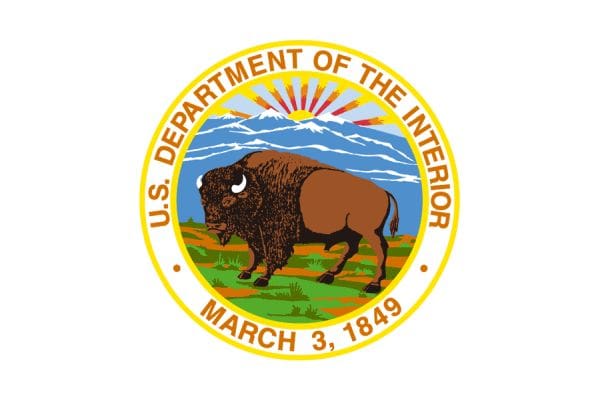WASHINGTON — As the nation kicks off Climate Week, the Department of the Interior today announced more than $24 million from President Biden’s Investing in America agenda to restore our nation’s lands and waters. The funding from the Bipartisan Infrastructure Law will support 50 ecosystem restoration projects that include on-the-ground action in 34 states and multiple U.S. Territories, as well as many projects that provide nationwide benefits, building climate resilience, improved habitats, and healthier communities.
“At a time when tackling the dual climate and biodiversity crises could not be more critical, these investments in clean air, wildlife habitat, cultural resources, and open spaces will benefit people, wildlife and local economies for generations to come,” said Secretary Deb Haaland. “Through the President’s Investing in America agenda, we have transformational resources to advance locally led, partnership driven projects that will catalyze nature-based solutions and build resilient communities and landscapes.”
Through the Investing in America agenda, the Department is stewarding an overall $2 billion over five years in new investments to put people to work restoring our nation’s lands and waters. To guide these historic investments, and in support of the President’s America the Beautiful initiative, the Department unveiled the Restoration and Resilience Framework to catalyze coordination and drive transformational outcomes across new and existing restoration programs and initiatives.
Funding announced today builds on over 600 projects previously announced to improve the nation’s natural infrastructure. Projects selected will advance the three pillars of the Restoration and Resilience Framework: building climate resilience and addressing climate change impacts; restoring healthy lands and waters; and enhancing communities’ quality of life.
Many projects are locally led, and most will be conducted in partnerships with states, Tribes, U.S. Territories, or non-profit organizations. At least 40 percent of all investments will benefit historically underserved communities, advancing President Biden’s Justice40 Initiative, which aims to deliver 40 percent of the overall benefits of certain federal climate, clean energy, and related investments to disadvantaged communities.
Phase 4 projects announced today include many that support the keystone initiatives outlined in the Restoration and Resilience Framework, including:
- More than $4.5 million to advance co-stewardship and salmon restoration in Alaska’s Yukon, Kuskokwim and Norton Sound region, through the Department’s Gravel to Gravel Initiative. Salmon in the region hold deep cultural, subsistence and ecosystem significance. In partnership with Tribes, Indigenous leaders, other agencies and community partners, the initiative is bringing Indigenous Knowledge and the best available science to the table to inform plans for collective action to support resilient ecosystems and communities in the region and make immediate investments to respond to the salmon crisis.
- More than $5.3 million to protect, conserve and restore Central Grasslands and restore bison populations, through the Department’s Grasslands Initiative. Grasslands are home to hundreds of plants and animal species with rich ties to the people and communities who live, work and thrive in these areas. The initiative, working collaboratively with farmers and ranchers, state and local leaders, Tribal Nations, the outdoor recreation community, private landowners, and others will utilize Indigenous Knowledge, restore bison populations, and protect numerous bird, bee and butterfly populations that are declining precipitously as their grassland habitats disappear.
- More than $3.4 million to advance the National Seed Strategy. Native plant communities across the United States are being lost every day due to climate-related impacts, such as longer wildfire seasons and other extreme weather events. Actions to conserve and restore native plant communities, such as supporting a robust native seed supply chain, are important strategic components of emergency preparedness, sustaining biodiversity, and landscape resilience. Through the National Seed Strategy Keystone Initiative, the Department is updating and expanding Tribal greenhouse facilities, assisting local farmers in transitioning from high-water crops to low-water native plant crops, engaging youth in native seed collection via the Seeds of Success program, and increasing regional seed production capacity.
- More than $3 million to restore strategic areas in the sagebrush ecosystem. Spanning over 175 million acres in the Western United States, sagebrush country contains biological, cultural and economic resources of national significance. Due to biome-level threats, these landscapes are dramatically degrading. As part of the Sagebrush Keystone Initiative, funding announced today will support 12 projects across the Sagebrush Collaborative Restoration Landscapes and will help address the major threats to sagebrush habitat, including projects to control invasive species, manage fire risk, and reduce the encroachment of nuisance conifer trees that crowd out the sagebrush.
- More than $2.5 million to reduce the impacts from mining and address the critical intersection of ecological, social and economic needs of Appalachia, through its Appalachia Keystone Initiative. The Department is working to restore native vegetation and reduce hazards from legacy mining activities, advance biodiversity, and improve access to outdoor spaces while helping working families across the region.
- $1 million to prevent imminent extinction of Hawaiian forest birds, through the Hawaiian Forest Bird Keystone Initiative, which employs a multi-pronged and bio-cultural approach for native bird conservation and avian malaria control in collaboration with the Native Hawaiian Community.
Investments will support projects in fiscal year 2025 and beyond and will be stewarded by the Department’s Bureau of Indian Affairs, Bureau of Land Management, Bureau of Reclamation, National Park Service, Office of Insular Affairs, Office of Surface Mining Reclamation and Enforcement, U.S. Fish and Wildlife Service, and U.S. Geological Survey.
Read the full article here




